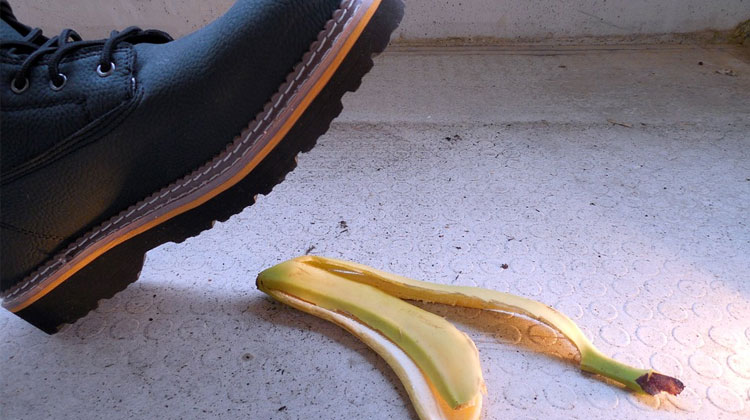How To Prevent Slippery Floors
The HSE (Health and Safety Executive) outline that flooring must be suitable for the activity or type of work that is taking place on it, they also state that they require floors to be suitable, in good condition and free from obstructions so that people can move around freely. Further to this, statistics also show that the most common cause of injuries in the workplace are as a result of slips, trips and falls. It is therefore essential that you are aware of what can be done to prevent floors from being slippery and ultimately prevent injuries on your premises.
1. Cleaning Regime
A stringent cleaning regime is extremely important in preventing slips and trips in any environment. There are various cleaning tips you can utilise to help reduce slip risks such as the following:
- A simple yet effective tip is to ensure you are using separate mops for different areas within a building. For example, a kitchen mop may gather grease overtime and if this was then used in a high footfall area the grease may be deposited and contaminate the floor. Using separate mops ensures that contamination isn’t transferred from one place to another.
- In highly contaminated areas you can also benefit from applying degrease detergents to the flooring, this helps to reduce any excess moisture after cleaning.
- Regularly washing your cleaning utensils is also important in reducing excess moisture being added to the floor, rinse mops and cloths after every use.
2. Slip tests
Legal regulations state that flooring should be safe enough to reduce the risk of slips to a sufficient level. One floor test that you could use is a pendulum slip test, a result of 0-24 means there is high slip potential, 25-35 shows moderate slip potential and a result of 36+ for a low slip potential. You should therefore try to produce a result of 36+ to provide maximum safety to staff and customers. We recommend you test your floor as regularly as possible so you can identify whether improvements need to be made.
3. Floor treatments
In order to revitalise damaged or worn flooring you can invest in various floor treatments, which aim to bring back the original flooring standards. These may include abrasive techniques (e.g. nano blasting) or acid etching, both of which need to comply with regulation and be applied with the appropriate safeguarding methods. Once applied it is recommended you have a professional carry out a slip test to ensure it is offering the slip resistance required.
4. Mats
This can be a great way to reduce the risk of injury in prone slip areas without making the area look unpleasant to the eye. Some examples of mats you can use are as follows:
- Entrance Mats - These are placed at the main entry points of your building and helps to defend flooring against moisture that is brought in by footfall, specifically moisture on shoes.
- Scraper Mats - These are to help remove tougher debris that is trapped in shoes and should be placed in areas where there are high amounts of mud and dust, for example at building sites.
- Anti-Slip Mats - These are best placed in areas with high levels of grease residue, such as kitchens and toilets, as they create better traction between the floor and shoes.
In order to ensure your flooring is meeting the standards set by the HSE and is safe for your workforce, get in touch with National Testing today. We are UKAS accredited meaning we can implement robust tests and reporting in order to protect your company legally as well as identify any next steps to avoid potential risks.

